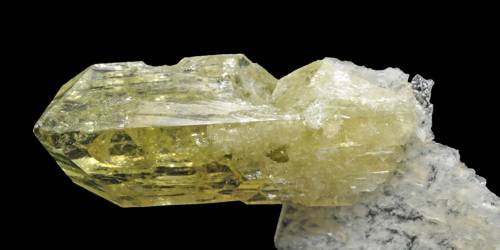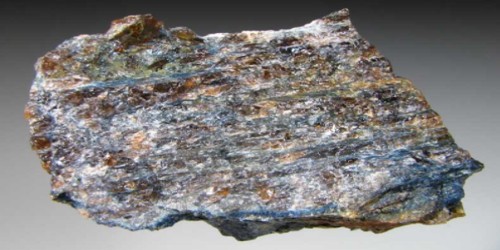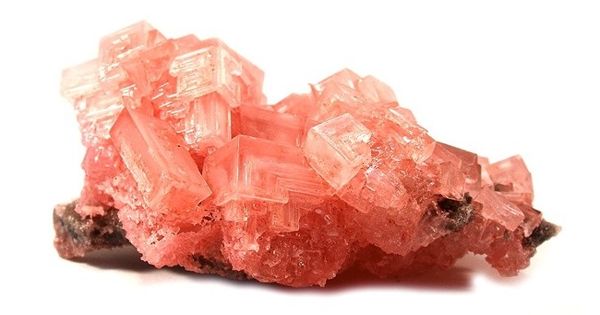Brazilianite, whose name derives from its country of origin, Brazil, is a typically yellow-green phosphate mineral, most commonly found in phosphate-rich pegmatites. It is an unusual gemstone mineral. It is one of the only phosphate minerals to be used as a serious gemstone. Although the phosphate mineral apatite is cut into gems it is not considered as precious as brazilianite. Of course, brazilianite is relatively new to the mineral markets and is still not well known to everybody.
It has a fair luster and interesting color, a yellow to greenish yellow. It may look a little like yellow topaz but brazilianite tends to be more green. Although not as hard as most other gemstones, it is one of the hardest phosphate minerals. Many brazilianite found in mineral collections originated from the Palermo and the Charles Davis mines in Grafton County, New Hampshire.
General Information
- Category: Phosphate minerals
- Formula: NaAl3(PO4)2(OH)4 (sodium aluminum phosphate hydroxide)
- Crystal system: Monoclinic
- Crystal class: Prismatic (2/m) (same H-M symbol).

Properties
Brazilianite is a mineral in the monoclinic system that is part of the point group 2/m and belongs to the space group P21/n. The crystals of brazilianite are elongated and prismatic along [100]. The mineral has a Mohs hardness of 5.5 and was believed it had a specific gravity of 2.94 which was first determined by Pough and Henderson, 1945.
- Color: Yellow, green, colorless
- Crystal habit: Prismatic crystals, maybe radially-fibrous or globular druses
- Cleavage: (010) Distinct to good
- Fracture: Conchoidal
- Mohs scale hardness: 5.5
- Luster: Vitreous
- Streak: White
- Diaphaneity: Transparent to translucent
- Specific gravity: 2.98
Occurrence
Brazilianite is typically found in granite pegmatite and it is often found the cavities within the pegmatite where quartz, beryl, and mica are also found. Different habits of brazilianite have been found in different locations. It occurs in the form of perfect crystals grouped in druses, in pegmatites, and is often of precious-stone quality. One noted deposit of brazilianite is in the surroundings of Conselheiro Pena, in Minas Gerais, Brazil. In New Hampshire, the pegmatite where the brazilianite was found was made up of 99 percent albite, mica, and quartz. Brazilianite also found with tourmaline and feldspar.
Information Source;
















